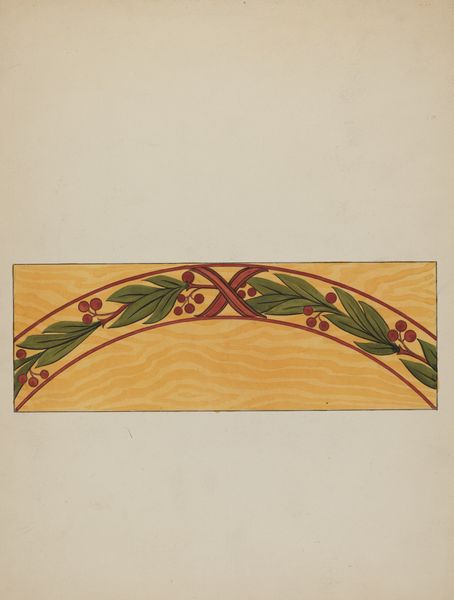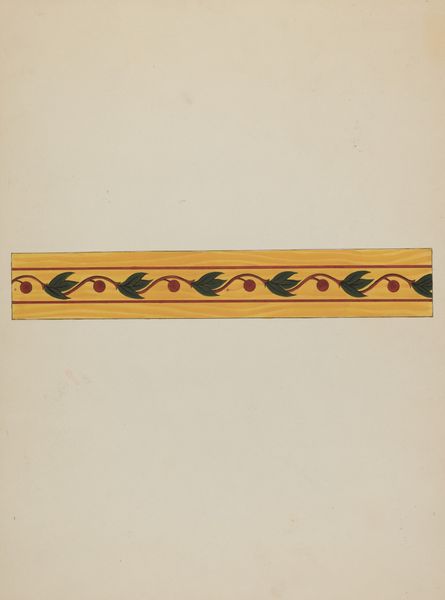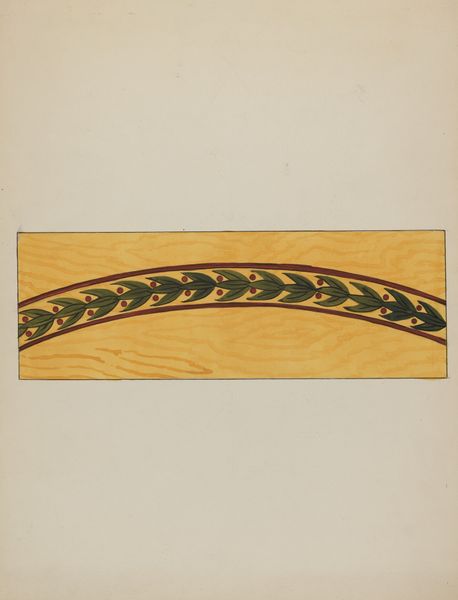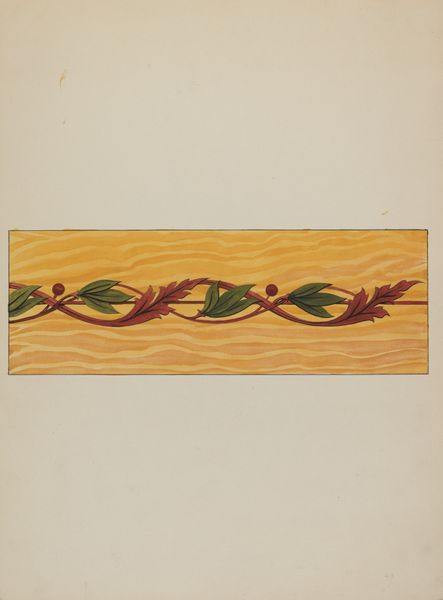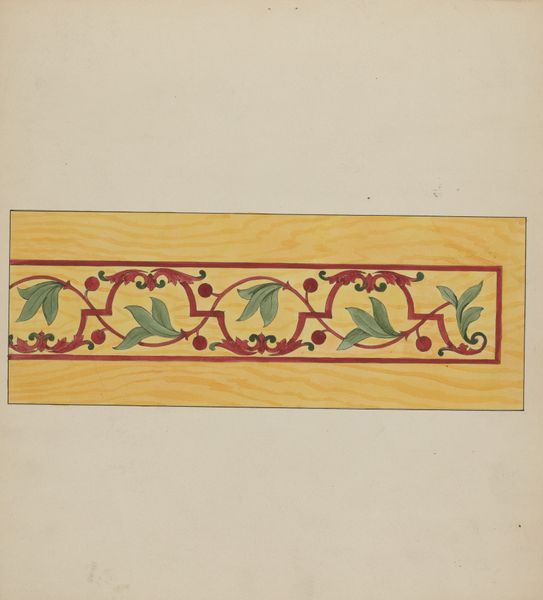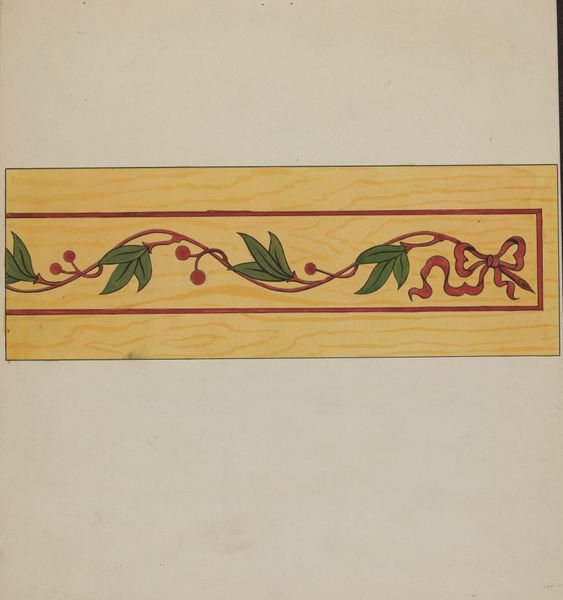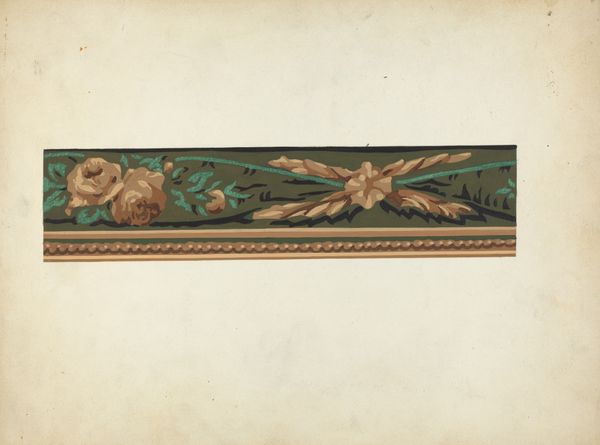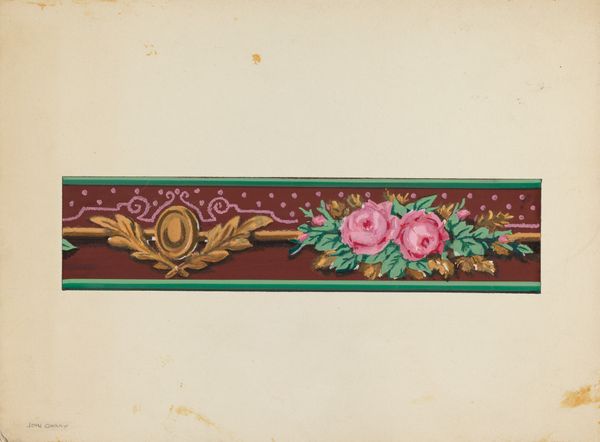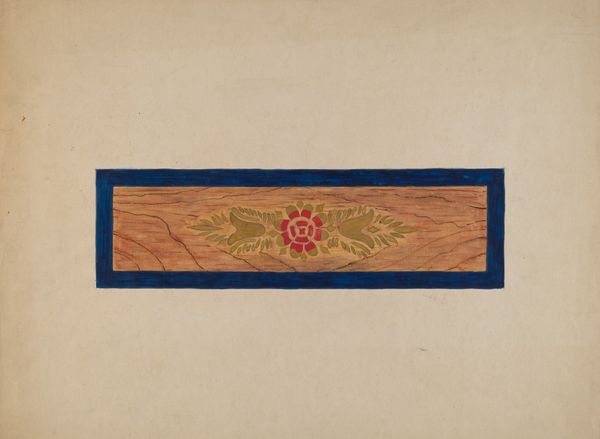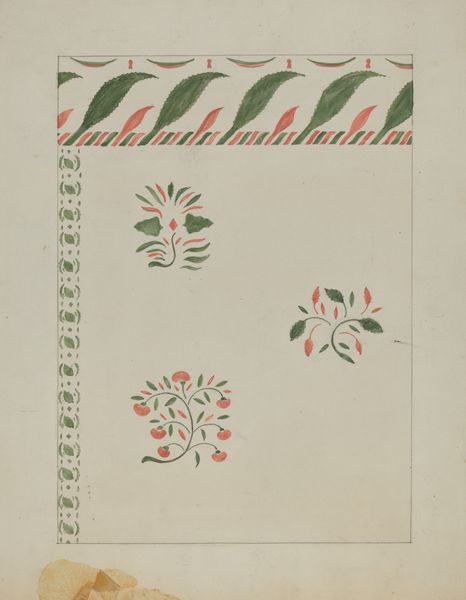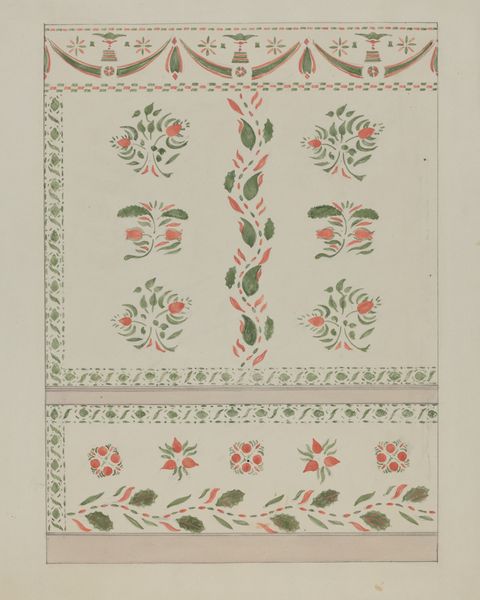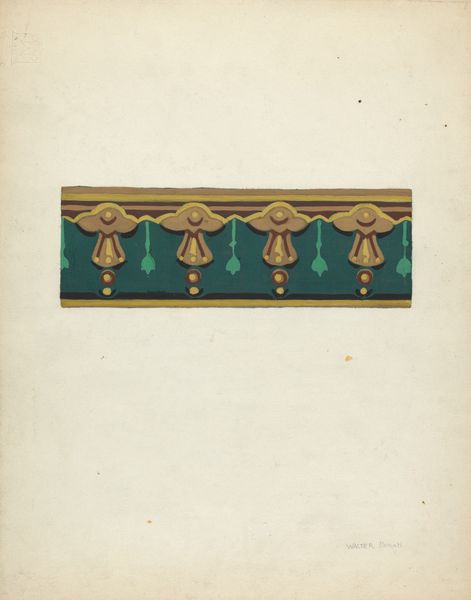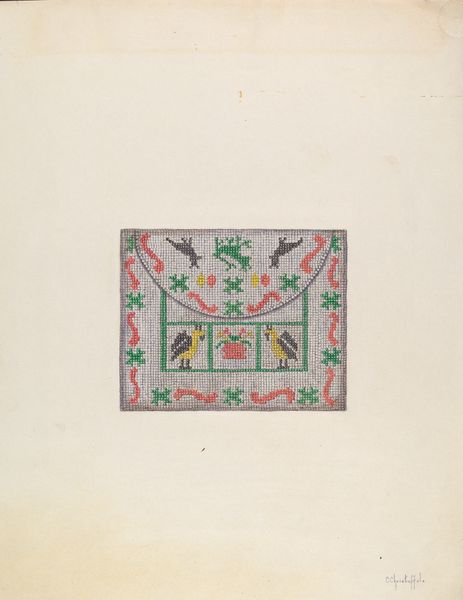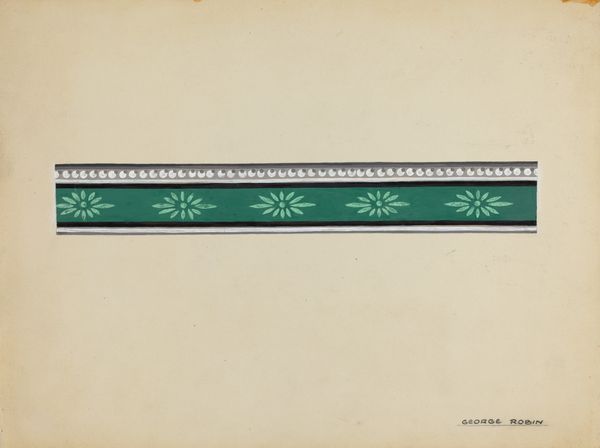
drawing, watercolor
#
drawing
#
water colours
#
watercolor
#
watercolour illustration
#
decorative-art
#
watercolor
Dimensions: overall: 33.7 x 25.2 cm (13 1/4 x 9 15/16 in.)
Copyright: National Gallery of Art: CC0 1.0
Editor: This watercolor piece, a Decorative Panel from Rail Car Interior created around 1936 by Wellington Blewett, is charming. It evokes feelings of vintage train travel, almost like glimpsing into a bygone era. What can you tell me about it? Curator: Well, let’s consider this object’s function, first. This wasn’t meant to be a framed artwork, but rather a decorative element within the specific environment of a rail car. It’s intriguing to consider how the repetitive holly motif was probably mass-produced for wide distribution, yet hand-painted watercolor insists a "preciousness". Editor: I see what you mean. It's design made for production, but laboriously painted. How does the context change our understanding? Curator: Absolutely! Focusing on material production raises key questions. What does it mean to hand-paint this pattern rather than print it? Blewett's role suggests an intersection of artisan and factory worker. I think about who rode on the trains with the painted panels. Decoration becomes something of a status signifier within the industrial setting, pointing to ideas about social class in an era of expanding railroad systems. Editor: So, by focusing on the panel's intended use, materials, and social context, we see the artist as more than just a creator of a pretty picture. He's engaging with mass production, social class, and even modes of transport. Curator: Exactly! Blewett is not simply expressing personal feelings. He's making an object, subject to processes, that inevitably is embedded in cultural values and materials available at the time of its creation. Editor: This completely reshapes how I look at this artwork. Curator: For me too. Analyzing art's production reveals how art and labour intertwine, and the object is evidence.
Comments
No comments
Be the first to comment and join the conversation on the ultimate creative platform.
